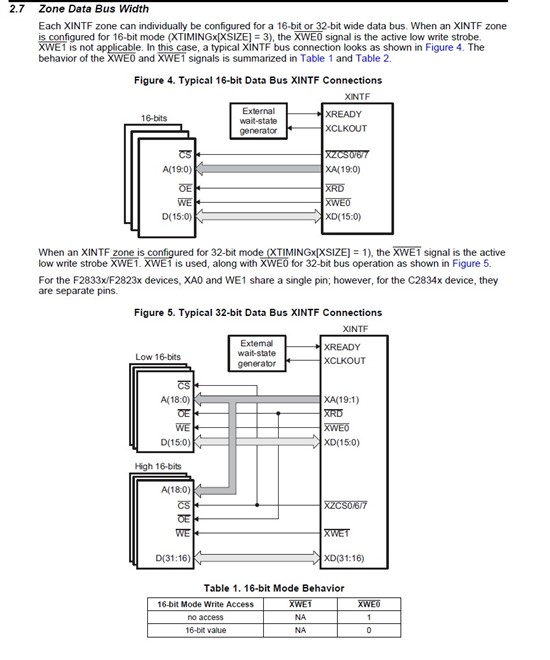I am running the example program "Example_2834xDMA_xintf_to_ram" on the C28346 Experimenter's Kit using CCS 4.02 MCU Ed with a XDS100v2. Here is the description of the example code:
// DESCRIPTION:
// Code will perform a block copy of 1024 words from Zone 7 XINTF (DMABuf2)
// to L2 SARAM (DMABuf1) .
// Transfer will be started by Timer0.
// We will use 32-bit DMA datasize. Note this is independent from the XINTF
// data width which is x16. Code will end in local_DINTCH1_ISR once the transfer is
// complete
Specifically, I am having issues with DMAbuf2 (in Zone 7 connected to the 2 SRAM chips). When data is initially written to DMAbuf2, it writes the same data to 2 elements in this array during 1 cycle. Then on the next cycle, it over-writes these 2 elements with the next 2 data entries. However, when I change the XINTF to a 32-bit bus from a 16-bit bus, this problem does not appear. The two snap shots below illustrate this issue better. The 1st snapshot shows the line of code I am talking about and the 2nd snapshot shows the watch window where the data entries are 1,1,3,3... when they should be 0,1,2,3,4....
The lower 16 bits of the data bus are connected to one of the SRAM chips and the higher 16 bit of the data bus are connected to the other SRAM chip on the c28346 control card.
Thanks for the help,
Jake


